
Want to Save This Recipe?
Enter your email & I’ll send it straight to your inbox. And you’ll get new recipes & tips each week.
Many (okay, most) of the baking recipes I share here at Live Simply contain gluten. Our family tolerates gluten, so whole wheat, spelt, and einkorn are my flours of choice. I also like to keep almond and coconut flour on hand, because I love the texture and the light texture these flours produce when used in baking. While our family consumes gluten, I’m well aware that many readers can’t tolerate the “g” word.
I’m often asked if my recipes can be made gluten-free. This can be a tricky question and one I’m often hesitant to answer.
There are many factors that go into creating baking recipes, such as the protein a flour contains and the gluten content of a flour (as we’ve seen gluten ratios can greatly vary between flours). As I mentioned in the almond flour lesson, simply substituting a grain and gluten-free flour such as almond flour simply doesn’t work when converting gluten recipes. This holds true for nearly all nut flours, which is why I advise not using these flours for converting gluten recipes unless you’re up for a lot of experimenting or have gluten-free baking experience. It’s generally best to use recipes that already call for these kind of flours.
So, is all hope lost for my gluten-free friends? Will you ever be able to enjoy my favorite chocolate chip cookies or chocolate muffins?
As gluten-free options reach a greater demand, flours have been formulated for baking which can be substituted one for one in gluten recipes creating gluten-free favorites that mimic the same texture and taste of their gluten counterparts. One of these flours is Bob’s Red Mill’s 1 to 1 Gluten-Free Baking Flour.
What is Gluten-Free Baking Flour?
In the past, converting a muffin, cake, or cookie recipe to be gluten-free required keeping a variety of flours on hand and time experimenting for just the right combination. Gluten-Free 1 to 1 Baking Flour takes away all the guessing and experimenting, combining the perfect ratios of gluten-free flours in one bag. Gluten-Free 1:1 Baking Flour is made with six different ingredients: brown rice flour, sweet white rice flour, sorghum flour (a gluten-free whole grain), potato starch, tapioca flour, and a small amount of xanthan gum (a thickener and gelling agent).
Why Should I Use Gluten-Free Baking Flour?
If you’re looking to eat gluten-free and want to make cookies, muffins, brownies, or cakes that call for whole wheat or even all-purpose flour, this flour mix is an easy solution. While I love to use almond and coconut flour for gluten-free baking, they don’t substitute one for one in many recipes. While not everyone needs to bake with a gluten-free flour, if you’re looking to cut out gluten or need to bake for gluten-free friends and family, this flour is handy to keep in the pantry for a simple gluten-free substitute that doesn’t require experimenting and tweaking of gluten recipes.
How Can I Use Gluten-Free Baking Flour?
Gluten-Free 1 to 1 Baking Flour can be substituted one for one in any recipe calling for a gluten flour. If a recipe calls for 2 cups of whole wheat flour, use 2 cups of Gluten Free 1 to 1 Baking Flour. Because this flour contains the perfect amount of each ingredient, the final product’s taste and texture will be similar to using a gluten flour. This is largely due to the sorghum flour which gives baked goods a wheat-like texture (source).
Not all gluten-free flour substitutes are equal. If the recipe doesn’t contain xanthum gum (a gelling and thickening agent), an extra binder will be needed. This means more eggs (or adding xanthum gum) than the recipe originally called for will be needed to hold the final product together (remember gluten is a binder). The Bob’s Red Mill Gluten-Free 1 to 1 Baking Flour contains a small amount of xathum gum which means that no extra binders are needed when making a gluten flour substitute.
When substituting a gluten-free flour mix for whole wheat flour, using a kitchen scale can be incredibly helpful. One cup of whole wheat flour generally weighs 140 grams. When substituting a gluten-free flour 1 to 1, weighing out 140 grams of gluten-free baking flour can often yield a more accurate measurement than simply measuring the flour in a measuring cup. If a cookie recipe calls for 2 cups of whole wheat flour, then you’ll need 280 grams of gluten-free baking flour. If you plan to bake with gluten-free flour, a kitchen scale can prove invaluable. Note: This does not apply to almond or coconut flour as they are not easily substituted for gluten flours in baking recipes and require extra recipe tweaks.
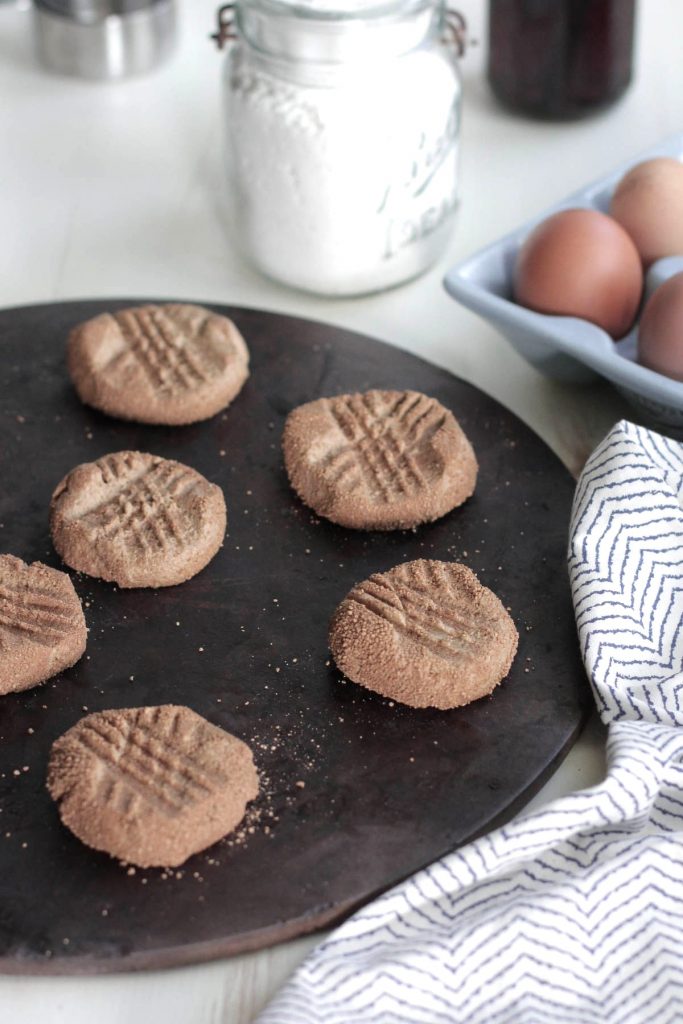
How Do I Store Gluten-Free Baking Flour?
It’s best to store gluten-free flour in a air-tight container in a cool, dark place.
Purchasing Tips
There are a few options for purchasing gluten-free flour mixes (many times referred to as “all-purpose” gluten-free flour) , some containing binders and some not (see “How Can I Use Gluten-Free 1:1 Baking Flour?” above for more information). When making a gluten-free flour mix substitution for any recipes here at Live Simply, I recommend using the Bob’s Red Mill’s Gluten-Free 1 to 1 Baking Flour. I’ve found this flour works best for creating a similar taste and texture to whole wheat (or other gluten flours). This flour can be purchased through Bob’s Red Mill and health food stores.
Gluten-Free Baking Flour Recipes to Get You Started
If you’re looking for recipes that specifically call for a 1 to 1 gluten-free flour mix, I’ve complied a few below. Remember, the beauty of 1 to 1 gluten-free flour is that it can be substituted in place of most whole wheat flours, so there’s no need for a special recipe. If you need to eat gluten-free, I strongly encourage you to learn how to use nut flours and grain-alternatives, but when needing to quickly convert a favorite wheat recipe (such as biscuits, muffins, or cookies) to gluten-free, a gluten-free baking flour can be a valuable ingredient!
Chocolate Chip Oatmeal Pecan Cookies with Orange Zest Glaze from The Organic Kitchen
Gluten-Free Pumpkin Crepes with Warm Apple Filling from Scratch Mommy
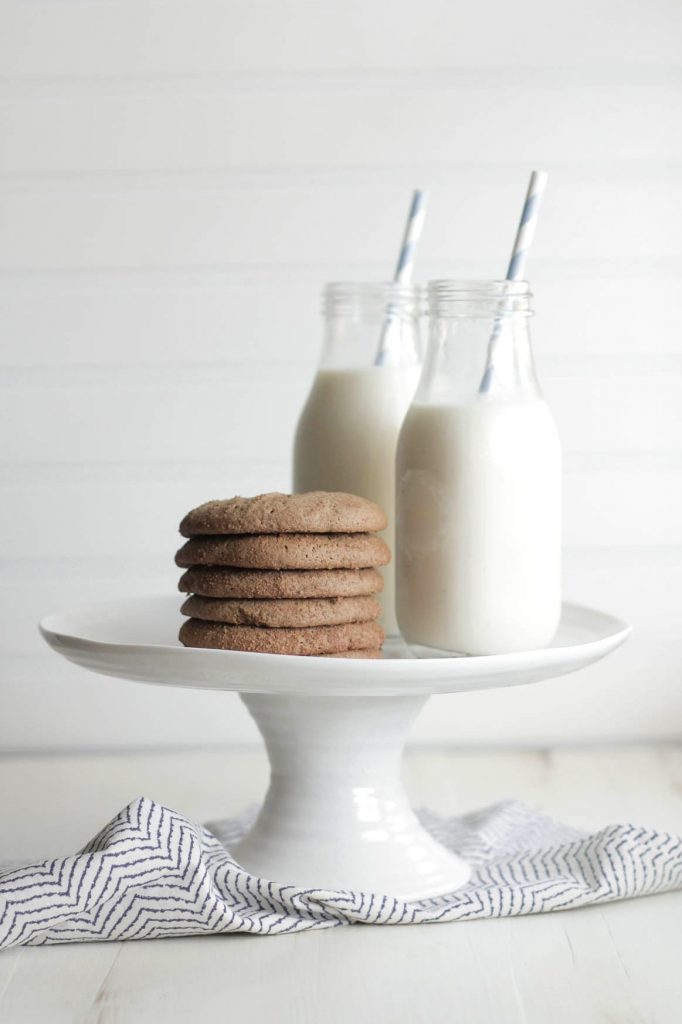
Along with the recipes, I’ve also included a new recipe that’s perfect for the holidays…Gluten-Free Gingersnaps! Gingersnaps are a dark molasses cookie that are filled with the aroma and flavor of ginger, cinnamon, and cloves. This recipe uses 1 to 1 Gluten-Free Baking Flour, but can easily be made with your favorite whole wheat flour. I personally recommend using white whole wheat.
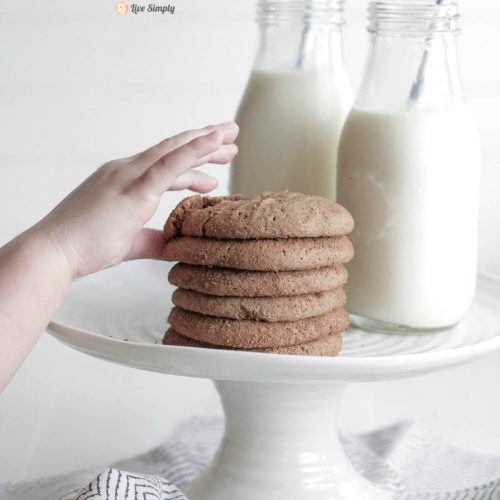
Gluten-Free Gingersnaps
Ingredients
Cookie Dough:
- 1 cup butter softened
- 3/4 cup sucanat pulsed in the food processor for 1 minute*
- 1/4 cup black-strap molasses
- 1 egg
- 1 TB ground ginger
- 1 tsp ground cinnamon
- 1/8 tsp ground cloves
- 2 1/4 cups Bob's Red Mill Gluten-Free 1 to 1 Baking Flour or whole white wheat flour
- 1 1/2 tsp baking soda
- 1/2 tsp salt
Cinnamon-Sugar
- 1/4 cup sucanat
- 2 tsp ground cinnamon
Instructions
- Using a stand-mixer fitted with the paddle attachment (or a hand-mixer or wooden-spoon), beat the butter and sucanat (that's been pulsed for one minute in a food processor) together for one minute until creamy. Add the molasses, eggs, ginger, cinnamon, and cloves. Beat for 1 more minute on medium speed.
- Add the flour, baking soda, and salt. Beat the dry ingredients into the wet ingredients until combined. refrigerate the dough for 30 minutes to 1 hour.
- While the dough rests in the fridge, pulse a 1/4 cup of sucanat in a bowl until fine. Pour into a small bowl. Whisk the cinnamon into the sucanat.
- Preheat the oven to 350F.
- After at least 30 minutes, remove the dough from the fridge. Form the dough into tablespoon-size balls, roll in the cinnamon-sugar, and place on a cookie sheet or baking stone. Flatten each ball with the back of a fork.
- Bake for 13 minutes until soft and the tops are browning (not burning!). Allow the cookies to cool before serving. The hot cookies will crumble if served.
Nutrition
*Sucanat is a coarse sugar that’s minimally processed. Because sucanat is coarse, I find pulsing it in a food processor for a minute helps break the large crystals into a finer sugar which is often superior for baking and rolling cookies.


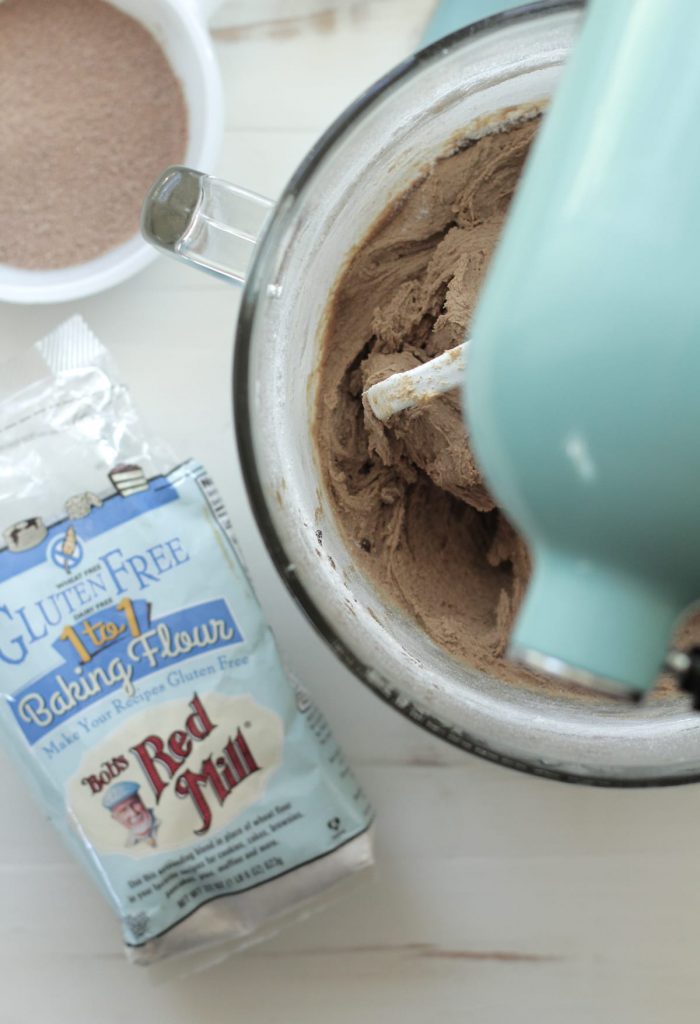
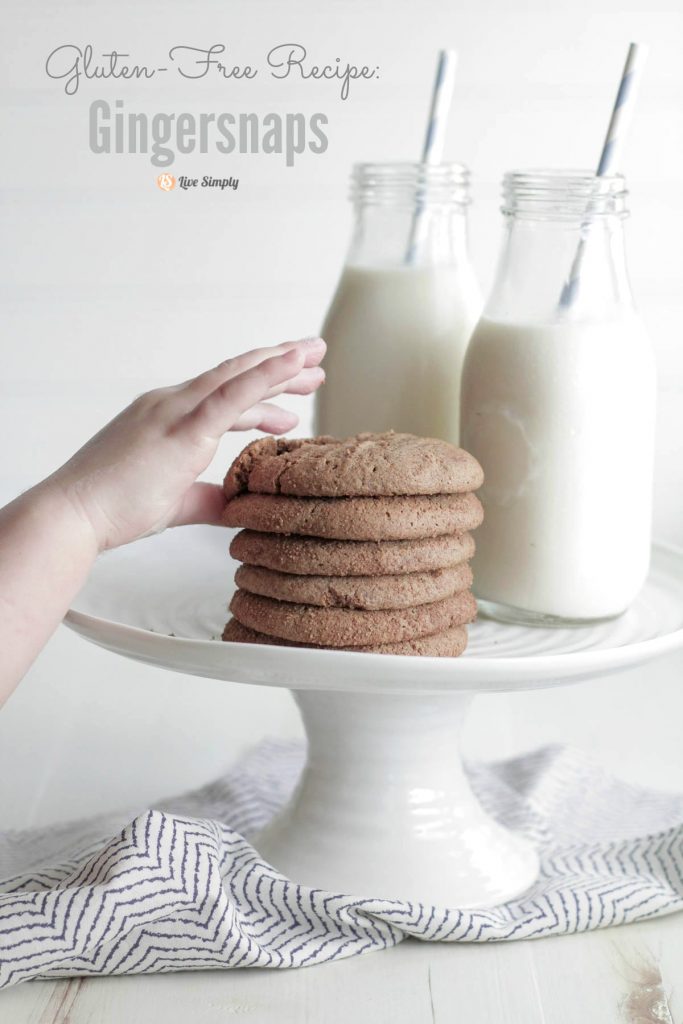
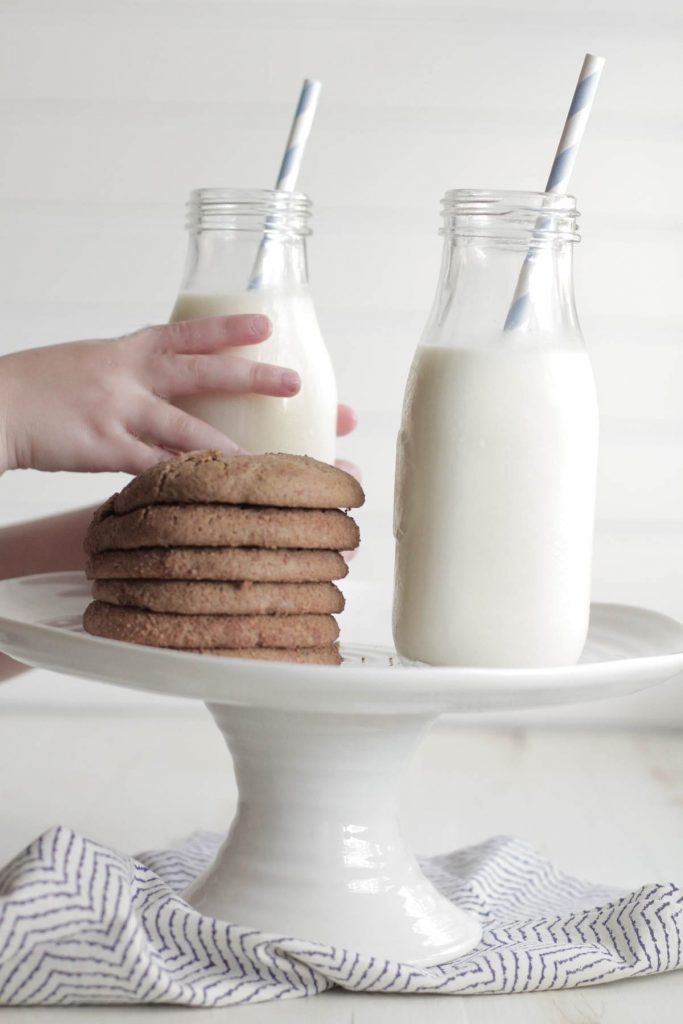
Hi! Can I use organic fine granulated cane sugar and skip the food processor? If so does it change the measurement? Thank you!
Hey Anne, I’m not sure. I want to say, yes you can use the sugar as a 1:1 sub, but I’ve never tested it before.
Hi Kristen… So I made these cookies and only baked half the dough to test them for texture. They definitely are more of a softer ginger cake cookie in texture, still tasty though! My question is that I have the remaining dough chilled in the fridge. Is there anything I can add to it so they bake as a harder ginger snap type cookie? Thanks in advance!
Hey Roya, These are definitely a soft cookie. You could try baking them for a bit longer, but I’m not sure if that will help dry them out a bit—creating a harder cookie.
I have use rob red mills 1-1 flour to make the gluten free French bread and I cook it as directed but comes out very soft in the middle
Hey Roni, Yeast breads can get a bit tricky sometimes. I’m guessing since it’s a french loaf that the recipe requires yeast? Truthfully, I’m not sure how to adjust the recipe to make the gluten-free blend work better.
This look wonderful! I am making them now–
One question, though. What temp do I bake them at?
Hey Megan, 350F :). I apologize for my delayed response. We are in the middle of moving and I’m just now answering comments.
Hi! These look amazing and I just special ordered this flour. I have Namaste, so I am going to try that as well. Quick question…are these a snap cookie or are they a softer cake cookie?
Hey Heather, Awesome! They are a bit softer than the snap cookies, but “harden” once cool.